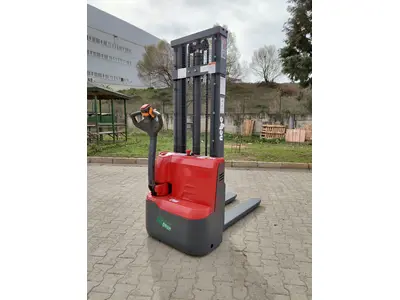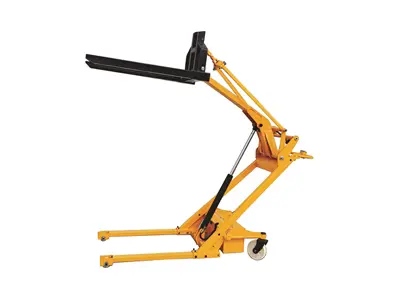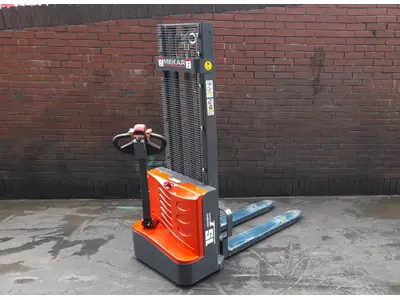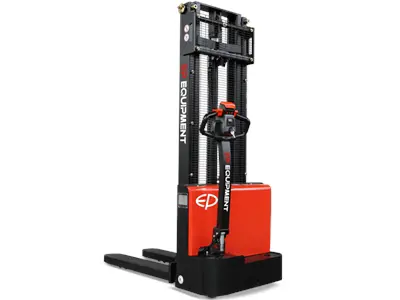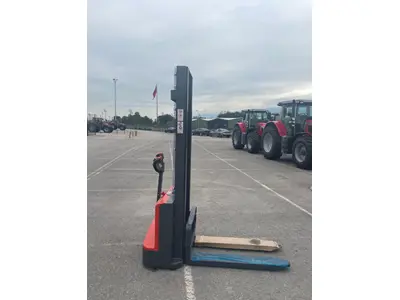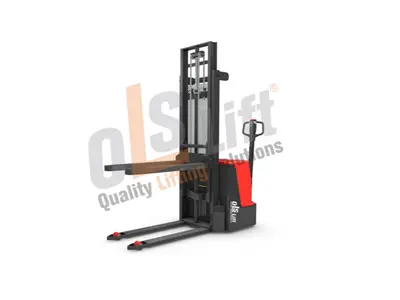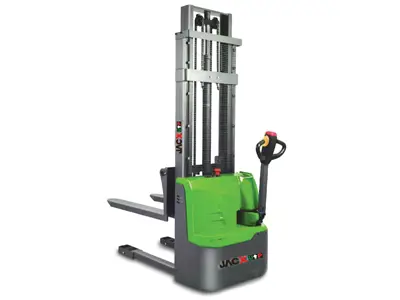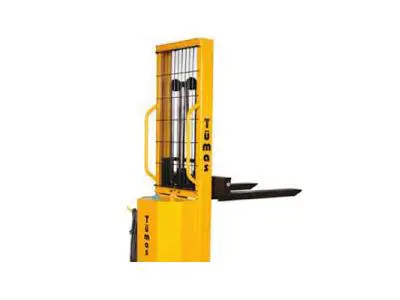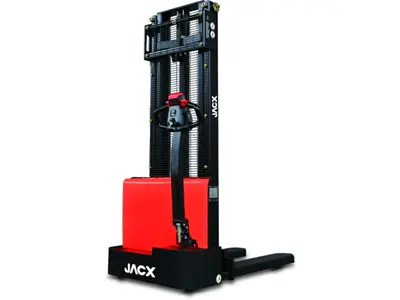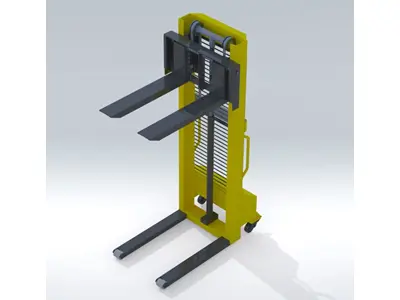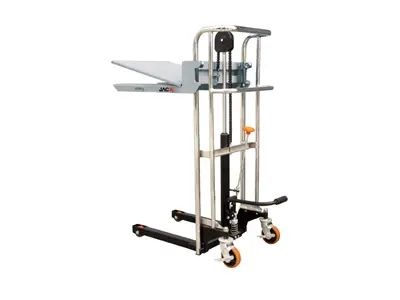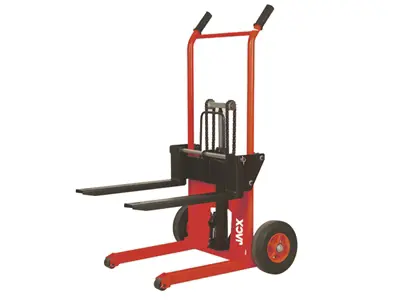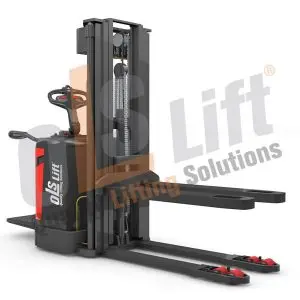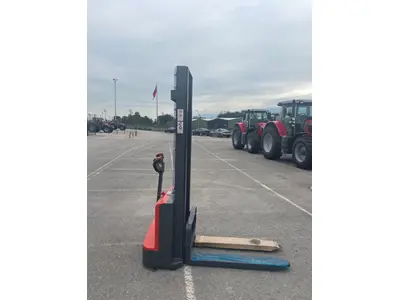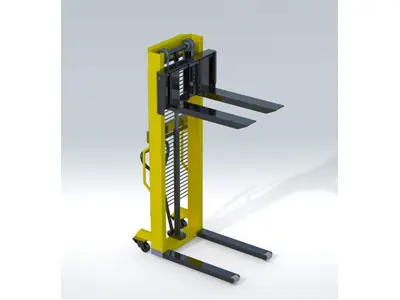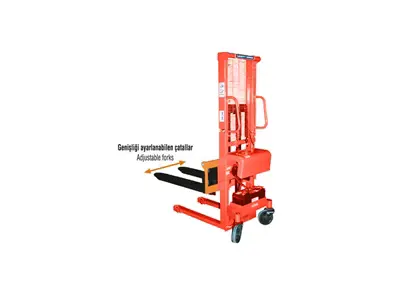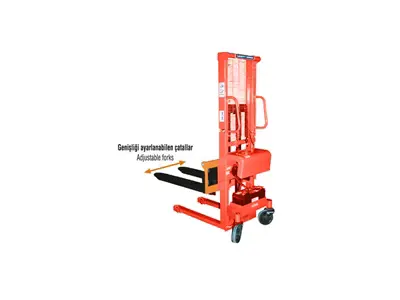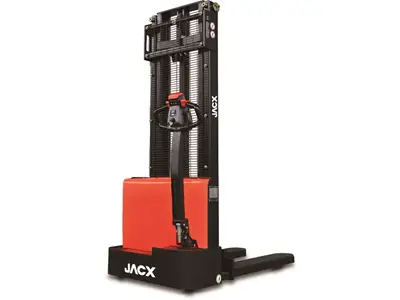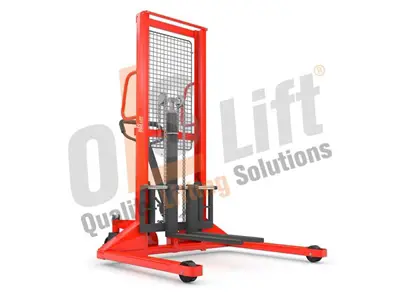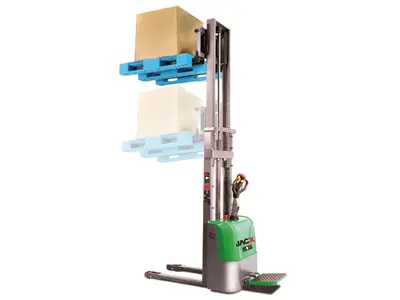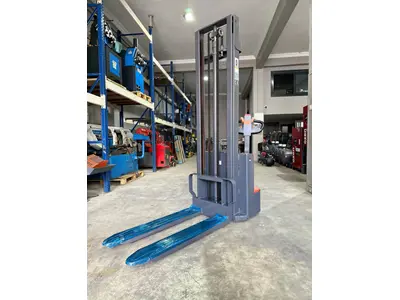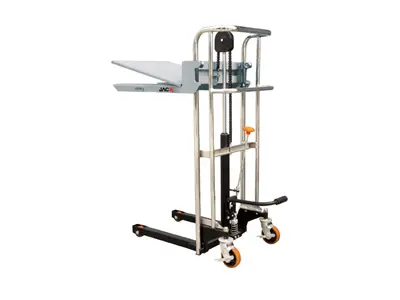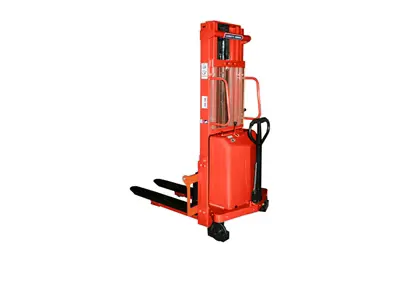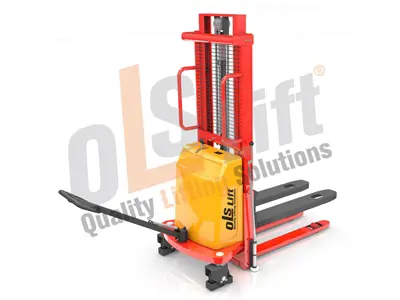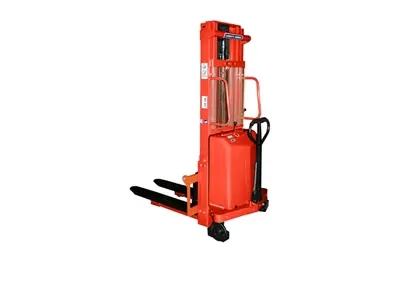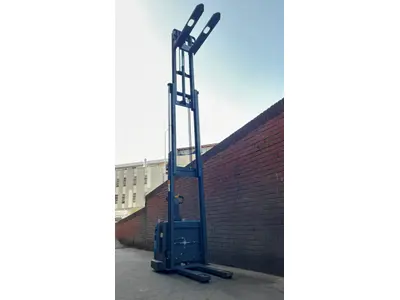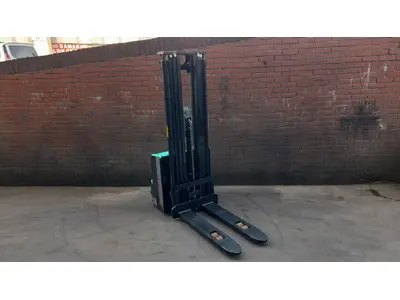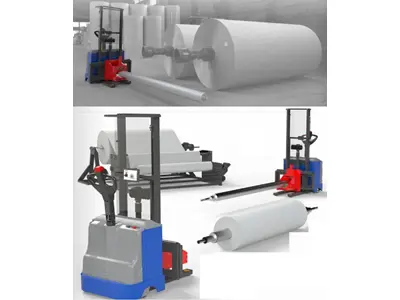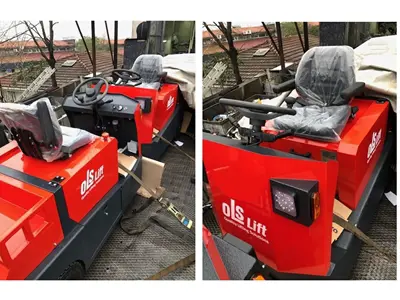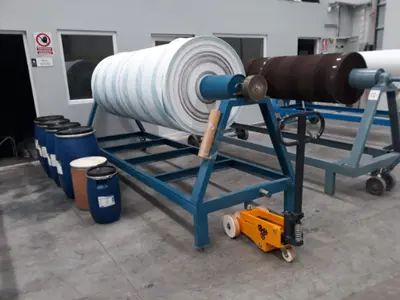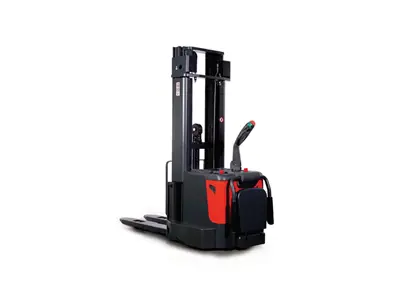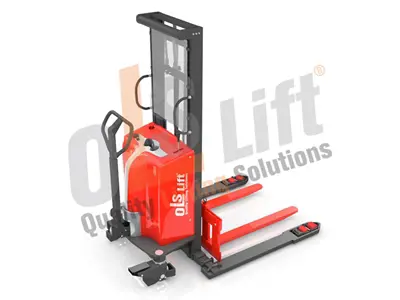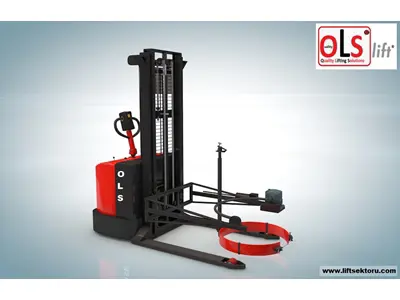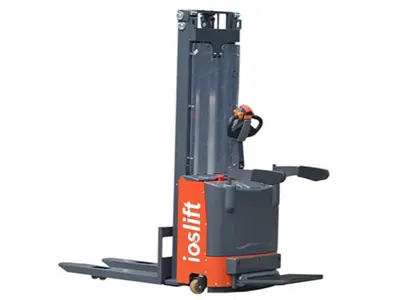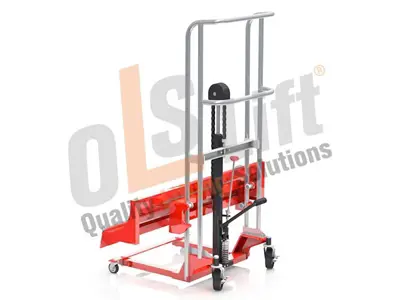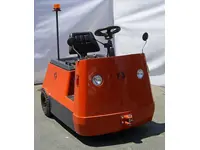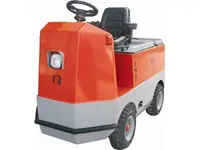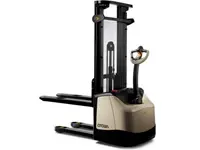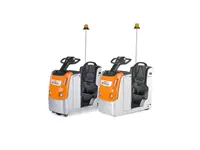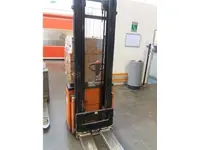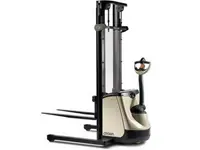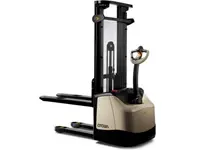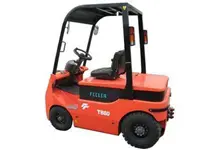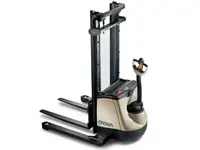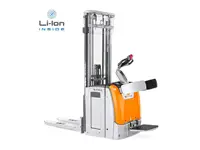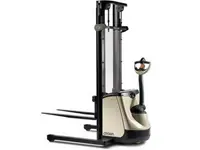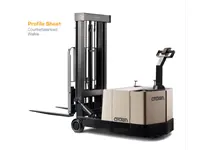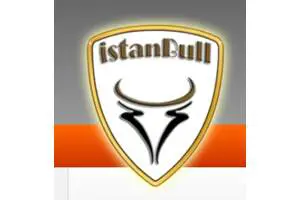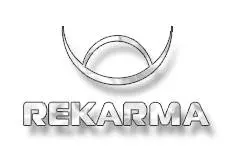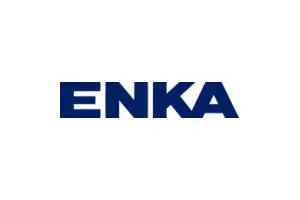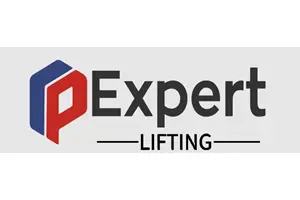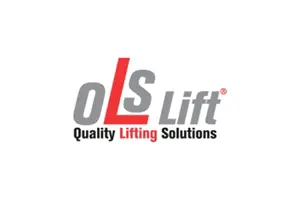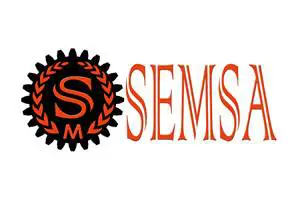Stacker Machine Popular Products
Stacker machine is a type of stacker that performs stacking and unstacking operations of materials at heights. It is commonly used in storage facilities, logistics operations, and material handling processes. Stacker machines are designed to lift, transport, and stack loads at heights.
Stacker machines have the ability to work with high rack systems. They can often move in narrow aisles, allowing for more efficient use of storage space. Stacker machines increase storage efficiency by stacking pallets, boxes, barrels, and other materials at heights. Stacker machines typically have adjustable forks. These forks lift, carry, and stack materials to perform operations. Additionally, some stacker machines can use other equipment in addition to forks, such as clamps or arms.
Operating Principle of a Stacker Machine
The operating principles of stacker machines can vary depending on the type and design used. However, generally, stacker machines use hydraulic systems, motors, and control mechanisms to lift, carry, and stack loads.
- Lifting Mechanism: One of the fundamental functions of a stacker machine is to lift loads. For this operation, a lifting mechanism is used. In many stacker machines, hydraulic cylinders and pistons are used to lift loads upwards. The hydraulic system applies force using pressurized fluid (usually hydraulic oil) to raise the load.
- Carrying Mechanism: After the lifting process, a carrying mechanism comes into play to transport the load. This is often a double-arm fork. In forklifts, the fork slides under the load when lifting it and then carries it. Different designs can be used in other stacker machines, for example, special attachments designed for wagons can be used in wagon stackers.
- Stacking Mechanism: Stacker machines use a stacking mechanism to stack or unstack loads to a specific height. This mechanism generally works by controlling the lifting mechanism. The stacking process is achieved by bringing the load to the desired position and then slowly lowering the lifting mechanism.
- Control System: Stacker machines are equipped with a control system operated by an operator. This control system receives commands that direct the machine's movements and execute lifting, carrying, and stacking operations. The control system typically has user interface elements such as a steering wheel, pedals, and buttons.
These basic principles explain the operation of stacker machines. However, each stacker machine may have different details depending on its design and functionality.
Areas of Use for Stacker Machines
Stacker machines have a wide range of applications and are commonly used in industrial storage and material handling processes. Here are some areas of use for stacker machines:
- Storage Facilities: Stacker machines are used in storage facilities to stack and store materials in an organized manner. Stacker machines that can work with storage rack systems are preferred to maximize warehouse space and increase storage efficiency.
- Production Facilities: Stacker machines are used in production facilities to transport materials, stack them at heights, and in logistics processes. Stacker machines are needed, especially to optimize material flow within a factory and speed up processes on the production line.
- Ports and Container Terminals: Stacker machines are used in ports and container terminals when large quantities of containers need to be handled manually. These machines can lift, transport, and stack containers to facilitate faster and more efficient material handling processes.
- Construction Sites: Stacker machines are used to transport and stack materials at construction sites. These machines have the capacity to lift and carry heavy loads, allowing construction materials to be moved and stacked safely.
- Retail and Distribution Centers: Stacker machines are used in large supermarkets, distribution centers, and e-commerce warehouses to optimize material flow and ensure regular storage and stacking of products.
- Automotive Industry: In the automotive manufacturing process, stacker machines are used for transporting vehicle parts, feeding materials on assembly lines, and storing finished vehicles.
These are just some examples, and the use of stacker machines is quite diverse. Businesses can choose the appropriate stacker machine based on their needs and sector to ensure efficient and safe material handling and storage processes.
Types of Stacker Machines
Stacker machines come in various types for different functions and applications. Here are some commonly used types of stacker machines:
- Forklift: The most common type of stacker machine. It has the ability to lift, transport, and stack pallets. Indoor forklifts are used in warehouses and production facilities, while outdoor forklifts are typically used in open areas like ports and construction sites.
- Warehouse Stacker: A special type of stacker machine used in warehouse environments. It has the ability to move in narrow aisles and high rack systems. It is designed to work in limited height areas and uses various techniques to stack pallets.
- Wagon Stacker: A special stacker machine used for moving and stacking loads on train wagons. It can be positioned next to wagons and lift, carry, and stack loads according to wagon specifications. These stackers are commonly used in railway transportation and the logistics sector.
- Container Stacker: A stacker machine specially designed to move and stack containers. It is commonly used in container terminals and ports. Container stackers can lift, carry, and stack containers at heights.
- Mobile Stacker: A mobile type of stacker machine used to lift and transport heavy loads. It is commonly used in ports, warehouses, and construction sites. Mobile stackers are typically designed with wheeled or tracked configurations and have high carrying capacity.
- Automated Warehouse Systems: Integrated systems that can automatically transport and stack loads using high rack systems. These systems include rack systems, conveyor belts, robotic arms, and computer-controlled management systems.
Electric stacker machine is a type commonly used in storage and material handling operations. It is powered by electric motors and designed for indoor use. Electric stacker machines offer advantages such as high efficiency, quiet operation, low maintenance costs, and less environmental emissions. There are various types of electric stacker machines, including forklifts, warehouse stackers, and wagon stackers.
Powered stacker machines are operated by integrated electric motors and generally provide less noise and emissions to the environment. These machines use rechargeable batteries and are designed for long-term use. Powered stacker machines are preferred to provide efficiency, safety, and environmental sustainability in storage and material handling processes. Businesses can optimize their workflows by selecting a powered stacker machine with the appropriate capacity, height, and features to meet their needs.
A stacker machine is a machine designed for stacking and unstacking materials at heights. They are commonly used in storage facilities and logistics operations. Stacker machines have the ability to work with high rack systems. They can move in narrow aisles, allowing for maximum efficiency in the utilization of storage space.
A pallet stacker machine is a type designed specifically for lifting, transporting, and stacking palletized materials. It lifts and carries loads by sliding under pallets. Pallet stacker machines used in storage facilities and logistics operations have the ability to stack at various heights.
A manual stacker machine is a type that is operated by human power. It is commonly preferred in small-scale warehouses and low-volume material handling operations. Manual stacker machines lift and carry loads using pushing, pulling, or pumping mechanisms. They may be a more cost-effective option but have limited capacity.
A stacker pallet truck is a type of stacker machine used to lift, transport, and stack palletized loads at low levels. It is commonly used in storage areas, supermarkets, or factories. It is operated by being pushed or pulled by an operator. Stacker pallet trucks have high carrying capacity and maneuverability.
These are just examples of some stacker machine types, and there are more specific and customized types available. The selection of a stacker machine is made based on the intended use, load capacity, working environment, and other requirements.
Stacker Machine Prices
The prices of stacker machines vary depending on several factors. These factors include the type of machine, brand, model, capacity, features, and the country where it will be purchased. Additionally, whether a new stacker machine or a second-hand machine is preferred is another factor affecting the price.
Especially, the prices of large and complex stacker machines are generally higher compared to smaller and simpler machines. Furthermore, products from renowned brands usually have higher price tags, while machines from less known or local brands may be more affordable.
If you are considering buying a stacker machine, determine your needs and compare price quotes from different sellers and brands by researching. Second-hand stacker machines can also be a more economical option. However, it is important to thoroughly evaluate its quality and functionality before making a purchase.
